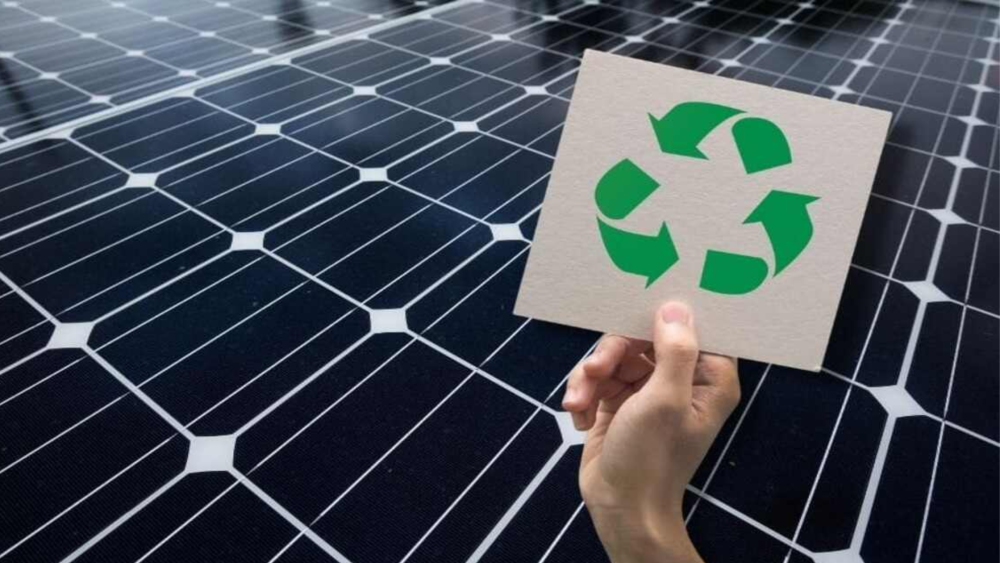The Future of Solar Energy: How to Recycle Solar Panels
Written on . Posted in Solar panels.

Try our solar cost and savings calculator
What Happens to Solar Panels at the End of Their Life Cycle?
As the solar industry continues to expand, the question of what happens to solar panels at the end of their lifespan is becoming increasingly important. Solar panels are designed to last around 25 to 30 years, but what happens when they need to be replaced? Recycling solar panels presents an opportunity to reduce waste and recover valuable materials. This guide will explore how solar panel recycling works, its environmental impact, and the challenges that the industry faces.
1. Why Is Solar Panel Recycling Important?
-
Growing Solar Installations:
With the rapid growth of solar installations worldwide, millions of panels will eventually reach the end of their useful lives. Ensuring that these panels are recycled instead of ending up in landfills is critical for reducing environmental impact. -
Valuable Materials:
Solar panels contain valuable materials, such as silicon, glass, aluminum, and rare metals like silver and copper. Recycling these materials reduces the need for new mining and manufacturing processes, lowering the environmental footprint. -
Reducing Waste:
Recycling helps prevent potentially hazardous materials in solar panels, such as cadmium and lead, from leaking into the environment if they are improperly disposed of.
2. The Components of a Solar Panel:
-
Glass:
Approximately 80% of a solar panel is glass, which can be easily recycled. -
Silicon:
Silicon cells make up the heart of a solar panel. While silicon is non-toxic, recycling it ensures that these valuable materials are not wasted. -
Aluminum Frame:
The aluminum frame of a solar panel is highly recyclable, and repurposing aluminum saves significant energy compared to producing new aluminum. -
Plastic Layer and Wiring:
Solar panels also contain plastic encapsulation layers and wiring, which are more challenging to recycle but can be separated and repurposed in specialized facilities.
3. How Solar Panel Recycling Works:
-
Mechanical Recycling Process:
Most solar panels are recycled through mechanical processes that involve separating the glass, silicon, and metal components. The glass is typically removed and repurposed, while silicon cells can be further processed for reuse. -
Chemical Recycling Processes:
Some advanced recycling facilities use chemical treatments to recover specific metals, such as silver and copper, from solar cells. This is more expensive but allows for greater recovery of valuable materials. -
Thermal Recycling:
In thermal processing, high heat is used to evaporate and recover metals from solar cells. This method is useful for dealing with the plastic encapsulation layer that is difficult to remove through mechanical means.
4. Current Challenges in Solar Panel Recycling:
-
Lack of Infrastructure:
Solar panel recycling infrastructure is still in its early stages. Most solar panels are still functioning, so large-scale recycling operations have not yet been fully developed. As solar installations continue to grow, there will be a greater need for specialized recycling facilities. -
Cost of Recycling:
Recycling solar panels can be costly due to the complex process of separating and recovering materials. In some cases, the cost of recycling can outweigh the value of the recovered materials, making it less economically viable without additional support. -
Limited Regulations:
In many parts of the world, there are few regulations requiring the recycling of solar panels. More stringent policies and government incentives could encourage companies to invest in recycling technology and infrastructure.
5. Future Solutions and Opportunities:
-
Innovative Recycling Technologies:
Research is ongoing to improve solar panel recycling methods. More efficient ways to recover materials, such as advancements in chemical recycling and automation, could make the process more cost-effective in the future. -
Extended Producer Responsibility (EPR):
EPR programs require manufacturers to take responsibility for the disposal or recycling of their products at the end of their life cycle. Such initiatives could help ensure that solar panels are responsibly recycled. -
Circular Economy:
The concept of a circular economy, where products and materials are reused and recycled, is gaining momentum. For solar panels, this means designing panels with end-of-life recycling in mind, making them easier to disassemble and reuse.
6. The Environmental Benefits of Solar Panel Recycling:
-
Reducing Raw Material Extraction:
Recycling solar panels reduces the need for mining and processing raw materials, which can be energy-intensive and harmful to the environment. -
Lowering Carbon Emissions:
By recycling and reusing materials from solar panels, the overall carbon footprint of the solar industry can be reduced, making renewable energy even more sustainable.
Conclusion: As solar energy continues to be a key player in the global shift toward renewable energy, finding sustainable solutions for solar panel recycling is essential. While challenges remain, advancements in technology, infrastructure, and policy are paving the way for more effective recycling methods. By committing to solar panel recycling, the industry can continue to grow while minimizing its environmental impact.
CTA: Interested in learning more about solar panel recycling and how it affects the future of renewable energy? Stay informed with the latest updates on solar technology and sustainability
Try our solar cost and savings calculator



